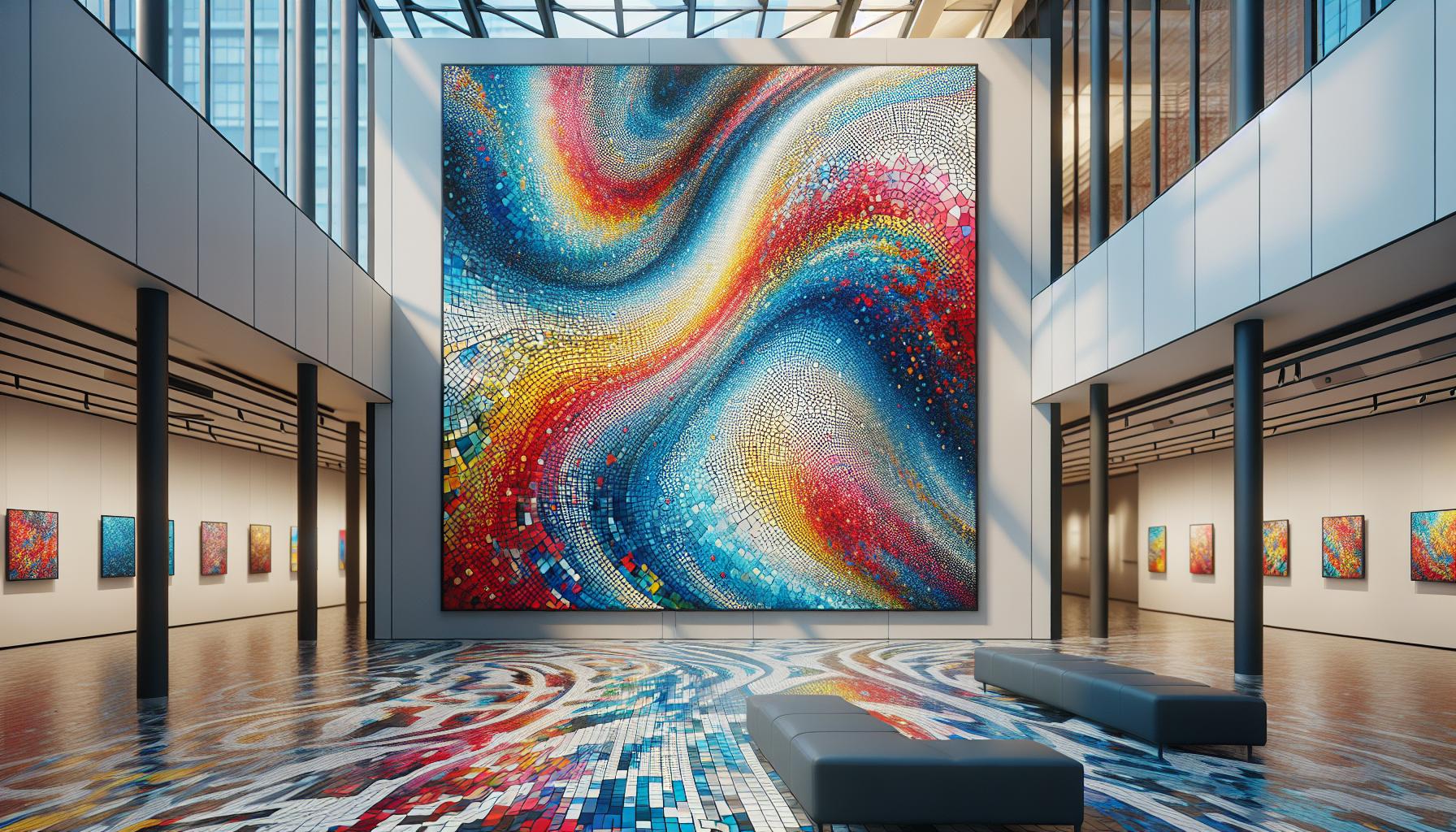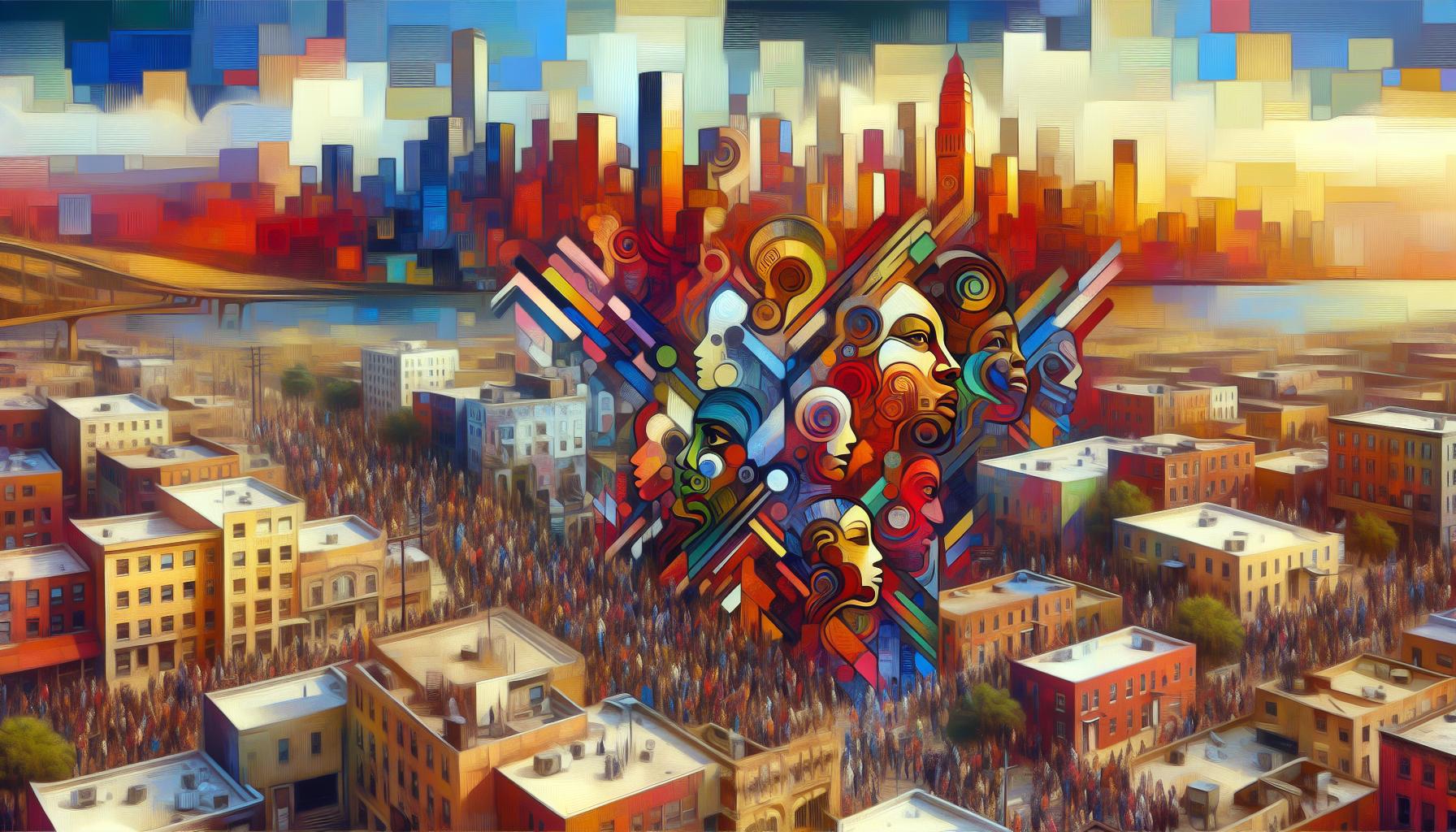Abstract African American art stands as a powerful testament to creativity breaking free from traditional boundaries. Artists like Romare Bearden and Alma Thomas transformed their cultural experiences into vibrant expressions that challenge conventional artistic norms while celebrating Black identity and heritage.
This distinctive artistic movement emerged during the Harlem Renaissance and continued to evolve through the Civil Rights era into contemporary times. Through bold colors geometric patterns and experimental techniques these artists have created works that speak volumes about the African American experience while transcending racial boundaries. Today’s collectors and art enthusiasts increasingly recognize the profound impact and growing value of these unique artistic expressions in the modern art world.
Abstract African American Art
Abstract African American art emerged in the early 20th century as artists explored new forms of expression beyond traditional European artistic conventions. Their innovative approaches incorporated African cultural elements with modernist techniques, creating a distinctive visual language.
Early Pioneers and Influences
Aaron Douglas pioneered abstract African American art in the 1920s by integrating geometric shapes with African motifs. Norman Lewis introduced abstract expressionism to the movement through his dynamic compositions featuring rhythmic patterns. Hale Woodruff developed a unique abstract style by combining African sculptural forms with cubist principles. Artist groups like Spiral, formed in 1963, provided crucial platforms for African American artists to experiment with abstraction. These pioneers drew inspiration from African textile patterns, tribal masks, ceremonial objects to create multilayered visual narratives.
The Harlem Renaissance Impact
The Harlem Renaissance catalyzed abstract African American art through cultural awakening. Artists like William H. Johnson transformed traditional scenes into bold, simplified forms with vibrant colors. Galleries like Studio Museum in Harlem opened doors for experimental African American artists. The movement gained momentum as Jacob Lawrence created abstract narrative series documenting Black experiences. Cultural institutions like the 135th Street Library Art Gallery exhibited groundbreaking abstract works. The Renaissance period established artistic communities that fostered innovation in form, color and composition.
Key Elements and Characteristics

Abstract African American art incorporates distinctive visual elements that reflect cultural heritage through innovative artistic approaches. These elements combine traditional African aesthetics with modern abstract techniques to create powerful artistic statements.
Color and Symbolism
African American abstract artists utilize bold color palettes featuring earth tones like ochre, sienna browns, deep reds to represent connection to ancestral lands. Vibrant complementary colors such as purple, yellow, orange create dynamic visual tension in compositions. Artists incorporate symbolic patterns drawn from African textiles including kente cloth designs, adinkra symbols, geometric shapes. Elements like circles, spirals, zigzag lines reference traditional African symbology representing concepts of unity, wisdom, strength. Color combinations like red, black, green reflect Pan-African pride while abstract forms suggest rhythm, movement, spirituality.
Cultural Expressions Through Abstraction
Abstract techniques enable African American artists to communicate cultural narratives through non-representational forms. Artists transform elements of African masks, sculptures, ritual objects into fragmented geometric shapes. Layered compositions integrate jazz rhythms, blues emotions, gospel spirituality through dynamic arrangements of color fields. Contemporary artists incorporate urban experiences through angular forms, fractured picture planes, mixed media elements. Textile patterns, architectural forms, natural elements merge in compositions expressing collective memory, identity, resistance. The abstract approach allows artists to explore themes of displacement, belonging, empowerment through visual metaphor.
Notable African American Abstract Artists

African American abstract artists have made significant contributions to the evolution of modern art through innovative techniques and unique cultural perspectives. Their work continues to influence contemporary art movements and inspire new generations of artists.
Alma Thomas and Her Vibrant Compositions
Alma Thomas revolutionized abstract art through her distinctive mosaic-like painting style. Her signature technique featured small rectangular blocks of color arranged in radiating patterns, creating dynamic visual rhythms. Thomas’s work “Watusi (Hard Edge)” from 1963 exemplifies her masterful use of vibrant colors influenced by natural phenomena such as flowers gardens light patterns. Her paintings incorporate circular motions bright hues including blues reds yellows that express movement energy. The Smithsonian American Art Museum houses several of her most significant works, including “Red Azaleas Singing and Dancing Rock and Roll Music” (1976), which demonstrates her ability to translate musical concepts into visual expressions.
Romare Bearden’s Collage Innovations
Romare Bearden transformed the landscape of abstract art through his groundbreaking collage techniques during the 1960s. His distinctive method combined photographic images magazine clippings painted elements into complex layered compositions. Bearden’s work “The Dove” (1964) demonstrates his mastery of spatial relationships cultural narrative through fragmented imagery. The Metropolitan Museum of Art features his piece “The Piano Lesson” (1983), which exemplifies his integration of jazz rhythms with visual elements. His techniques influenced contemporary artists by establishing new possibilities for mixing media materials textures. Notable works like “Patchwork Quilt” (1970) showcase his ability to merge African American experiences with modernist abstract principles.
Social Commentary Through Abstract Forms

Abstract African American art transforms social issues into powerful visual statements through non-representational forms. Artists use abstraction to address racial inequality, social justice, and cultural identity while creating emotionally resonant works that transcend literal interpretation.
Civil Rights Era Expression
Abstract art became a potent vehicle for Civil Rights messaging during the 1960s. Artists like Romare Bearden created fragmented compositions that reflected the fractured social landscape of segregated America. Sam Gilliam’s draped canvas works broke free from traditional frame constraints, symbolizing the push for liberation from systemic oppression. Norman Lewis incorporated subtle references to civil rights demonstrations in his abstract expressionist paintings, such as “American Totem” (1960), using dark shapes against light backgrounds to represent crowds of protesters. These artists embedded political commentary within seemingly non-objective works, allowing their messages to bypass censorship while speaking directly to informed viewers.
Contemporary Abstract Interpretations
Modern African American abstract artists continue this legacy of social commentary through innovative techniques. Mark Bradford creates large-scale abstract works using materials from urban environments to address gentrification and economic inequality. Julie Mehretu’s dynamic compositions layer architectural drawings with abstract marks to explore displacement and global power structures. Chakaia Booker transforms discarded rubber tires into powerful abstract sculptures that comment on environmental justice and industrial waste. These artists combine traditional abstract elements with contemporary materials to address pressing social issues facing Black communities today.
Abstract African American Art in Museums
Leading museums across America showcase significant collections of Abstract African American art, reflecting its growing influence in the contemporary art world. These institutions preserve and celebrate the rich legacy of Black abstract artists through permanent collections and special exhibitions.
Major Collections and Exhibits
The Museum of Modern Art (MoMA) houses an extensive collection of African American abstract works, featuring pieces by Norman Lewis and Alma Thomas. The Studio Museum in Harlem maintains a specialized collection focused on Black artists, displaying rotating exhibitions of abstract masterpieces. The National Museum of African American History and Culture presents comprehensive exhibits highlighting abstract art’s evolution within Black cultural expression. Notable permanent installations include works at the Whitney Museum of American Art, the Brooklyn Museum and the Smithsonian American Art Museum, each offering unique perspectives on abstract African American artistic achievements.
Growing Recognition and Market Value
Abstract African American art commands increasing attention in the global art market, with auction prices reaching record levels. Works by Sam Gilliam sold for $2.2 million at Christie’s in 2021, while Mark Bradford’s pieces regularly exceed $5 million at major auctions. The Philadelphia Museum of Art’s acquisition budget for African American abstract art increased by 300% between 2015 and 2022. Leading galleries like Jack Shainman Gallery and Hauser & Wirth now represent multiple African American abstract artists, contributing to market visibility. Private collectors actively seek works by emerging Black abstract artists, driving prices upward at contemporary art fairs.
Abstract African American art stands as a testament to the power of creative expression in challenging societal norms and celebrating cultural identity. Through bold experimentation with color patterns and innovative techniques these artists have carved out a unique space in the art world.
The movement’s evolution from the Harlem Renaissance to contemporary times showcases its enduring relevance and ability to address pressing social issues. As major institutions continue to recognize and celebrate these works the influence and value of Abstract African American art will undoubtedly continue to grow shaping the future of artistic expression.



